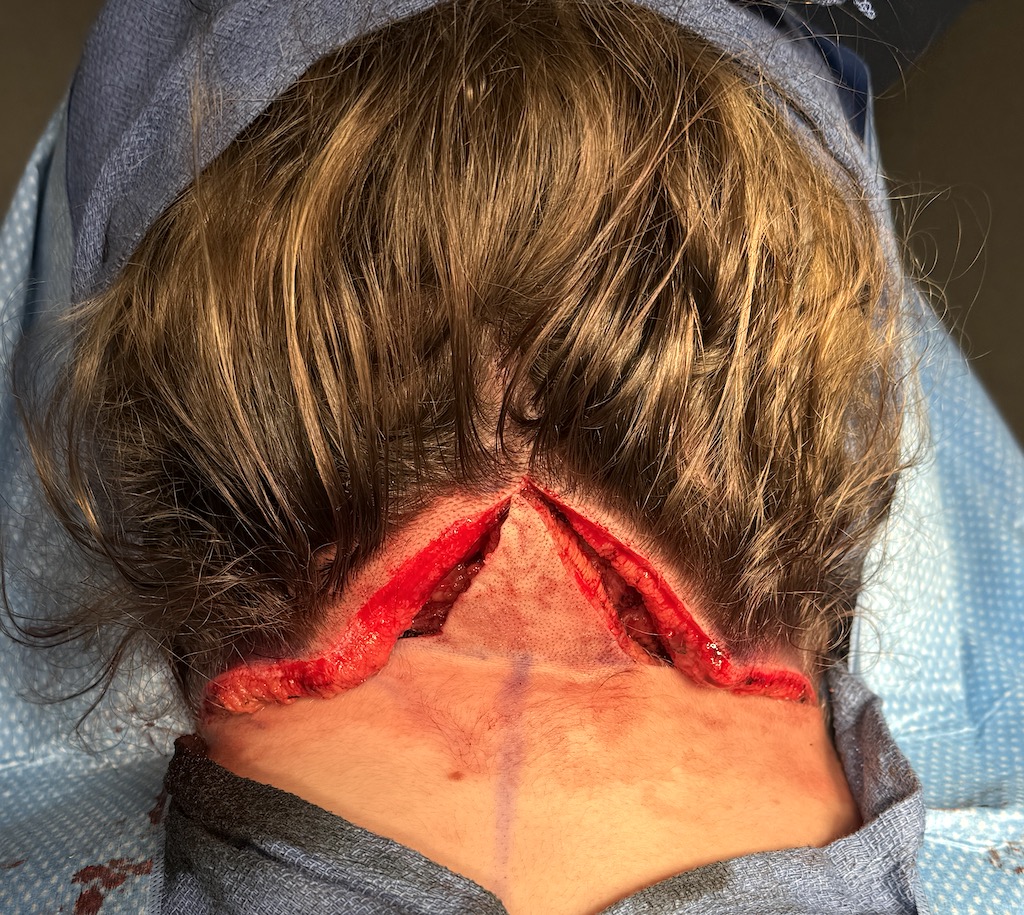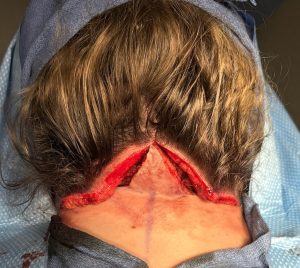Background: The webbed neck is a congenital deformity that is most commonly associated with Turner’s syndrome. It has a classic appearance of skin folds that run down along the sides of the neck to blend into the shoulders.This widened neck appearance is associated with hairline displacement with it extending down along the webs which when seen from the back creates a M-shaped inferior hairline edge well below the normal hairline.
While usually associated with Turner’s syndrome there numerous other conditions in which it is associated (e.g., Noonan and Klieppel-Fiel) as well as instances where it appears to have occurred in isolation without any other congenital issues. While all of these webbed necks may appear similar in my experience but they are not. Syndromic neck webs tend to be more pronounced, have more skin and are softer/more flexible. Non-syndromic neck webs tend to be stiffer and less flexible. Such tissue differences affect surgical techniques and long-term outcomes.
Webbed neck correction remains challenging and can be fundamentally divided into direct and indirect techniques. Direct techniques excise and rearrange the neck web directly and has the best result, short and long term, but has very prominent scarring both in extent and postoperative widening. Indirect techniques place the excision and flap advancements away from the webs in the back in the back of the neck which avoids visible scarring in most patients (females) but is associated with higher relapse rates and more incomplete web corrections as a result.
Historically the posterior indirect approach to the webbed neck has used either a central diamond or more widespread butterfly excisions pattern. The butterfly approach is really an extended posterior cervial lift technique with more limited scarring that avoids going down along the full length of the web. The inverted T technique is another webbed neck surgery modification that combines the indirect with the more direct approach but still with the main goal of keeping the scarring away from the visible lateral skin web.
Case Study: This young female had webbed neck that was not associated with Turner’s syndrome. Her posterior neck tissues and neck webs were stiffer and the pinch test revealed their tightness.
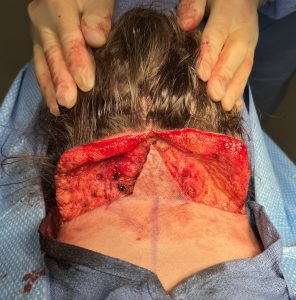
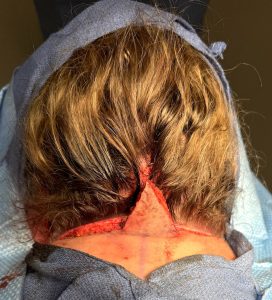
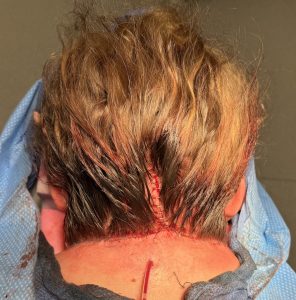
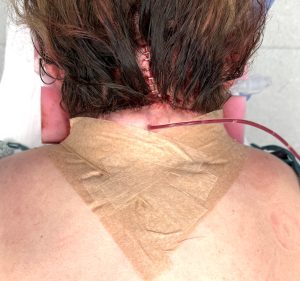
Her intraoperative results showed the improvement from the posterior view.
The next day at drain removal the upright improvement of the neck webs could be seen both in front and back views.
The ultimate test of webbed neck surgery, particularly in the indirect approaches, is at 2 to 3 months when whatever secondary tissue relaxation occurs (relapse) will have happened. In the inverted T technique the horizontal line may result in less relapse as there is a scar line from side of the neck to the other.
Whatever the long term outcome the primary reason one chooses an indirect approach or a combination of an indirect and direct approach is to avoid visible scarring at the sides of the neck…not because it produces guarantees maximal webbed neck correction.
The lower half of the neck web closest to the shoulder is the most difficult for an indirect approach to improve. Unsurprisingly that area does best when it is dealt with through direct techniques. But the price of that benefit is the visible scarring.
Key Points:
1) Non-Turner’s associated webbed necks have stiffer tissues that make the webs more refractory to sustained web corrections.
2) One approach to webbed beck correction is an inverted T technique which keeps all scar at or in the hairline.
3) The hardest part of the webbed neck to improve is the lower half at the junction of the shoulders.
Dr. Barry Eppley
World-Renowned Plastic Surgeon

